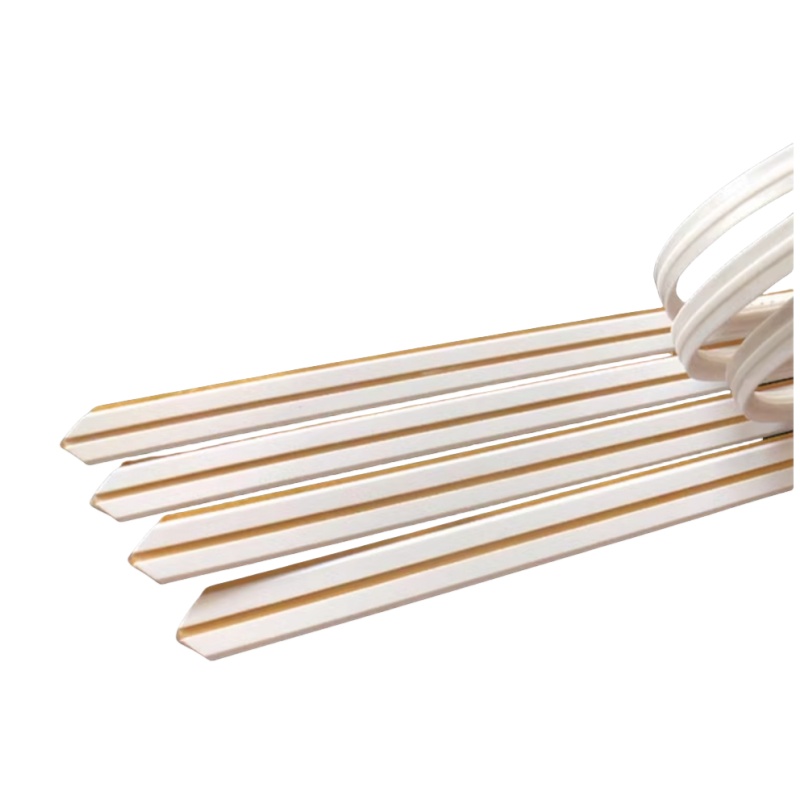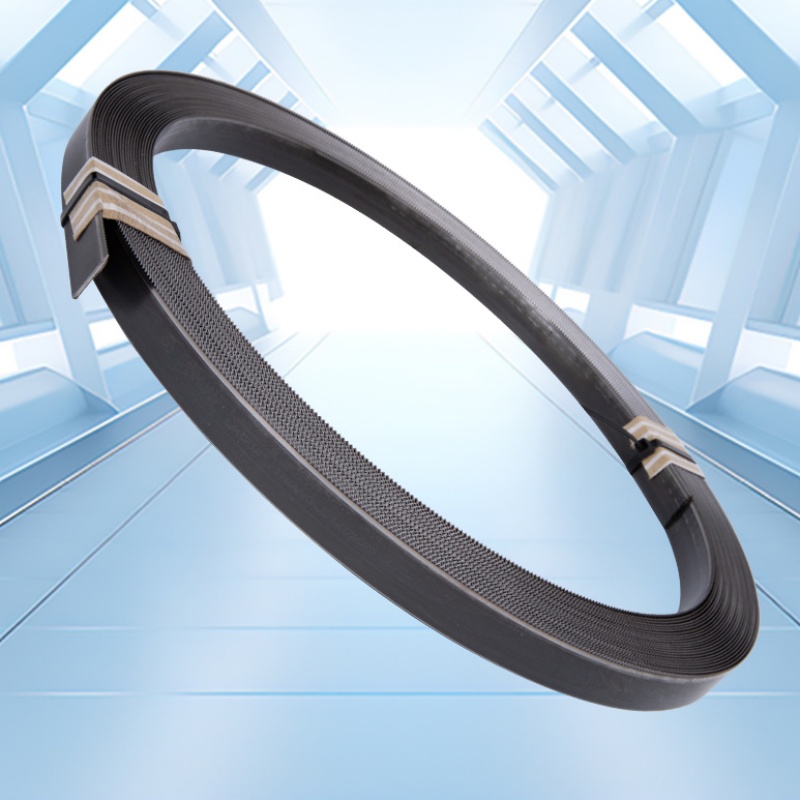
Die production procedures are crucial responsibility within assembly of superior items over a comprehensive range of trades. This class of steel demonstrate remarkable endurance, enabling them to tolerate substantial impacts involved in manufacturing processes. From transportation assemblies to medical instruments, rule die steel retains its usage in a vast of domains.
- Manufacturing components: Rule die steel is indispensable for crafting robust and detailed segments such as axles, springs and housings.
- Food Processing instruments: The outstanding fineness and corrosion resistance of rule die steel make it suitable for manufacturing complex food processing machinery.
- Stamping Dies: Rule die steel establishes the cornerstone of resilient tooling and molds used in various manufacturing procedures, ensuring accurate product output.
Precision Cutting Rules for Sharp Sheet Metal Fabrication
Realizing precision in sheet metal fabrication needs exacting attention to accuracy, particularly when it comes to cutting. Making use of the right cutting rules is indispensable to achieving accurate and trustworthy results. First and foremost, selecting the appropriate cutting method for your material thickness and desired edge quality is paramount. Options include plasma cutting, each with its own assets. Subsequently, understanding material properties like tensile strength, ductility, and hardness can help prevent warping or damage during the cutting process. Always utilize a material's datasheet for exhaustive guidelines on safe cutting practices.
- Likewise, maintaining sharp cutting tools is crucial for exact cuts and preventing stress on the sheet metal.
- Warm-up the material can reduce thermal stress and improve cut quality in thicker materials.
- To finish, post-processing steps like deburring and edge finishing are vital for achieving a professional and functional product.
Familiarizing with Punch and Die Construction
Punch and die construction is a critical aspect of the metal stamping process. These tools generate metal sheets into various elements by applying exact pressure. The design and construction of punches and dies considerably influence the effectiveness of the stamped wares. A well-constructed punch typically features a hardened steel tip to withstand repeated strikes, while the die aligns with this force with a precisely machined cavity. The interaction between these two elements secures the dependable transfer of shape and range to the metal sheet. The sophistication of punch and die construction can fluctuate based on the specialized requirements of the stamping application. Influences such as the material thickness, shape complexity, and production volume each play a role in determining the schematic of the tools. Understanding these fundamental principles of punch and die construction is key for anyone involved in the metal stamping industry. From operators to operators, a solid grasp of this subject can facilitate to increased efficiency, product quality, and overall success.Precision Folding Enabled by Creasing Matrices
When it comes to achieving precise fold lines in the realm of fabrication and material processing, creasing matrices emerge as a fundamental element. These specialized tools, often crafted from rigid materials like steel, are strategically designed to impart distinct creases into sheets or substrates. By exerting controlled pressure at specific points along the material's surface, creasing matrices effectively predefine fold lines that guide subsequent bending operations. This pre-creasing process significantly enhances folding accuracy, resulting in more dependable and polished final products.
- The precise nature of creasing matrices allows for the production of ornate folds and designs.
- They can be customized to accommodate a wide range of material thicknesses and properties.
- Creasing matrices play a vital role in industries such as paper manufacturing, cardboard packaging, and printed circuit board fabrication.
Cutting-Edge Rule Die Steel for Automotive Industry
The transportation business is continuously seeking materials that can withstand the stringent conditions of manufacturing and service. Notably, high-speed rule die steel has emerged as a key component due to its exceptional specifications. This compound exhibits superior hardness, wear resistance, and toughness, making it ideal for producing intricate automotive parts.
- Also, its ability to maintain these properties at elevated temperatures permits efficient production processes.
- Deployments of high-speed rule die steel in the automotive industry are manifold.
- Illustrations include cutting tools, molds for plastic components, and dies used in sheet metal stamping.
Adjusting Rule Die Steel Hardness for Cutting Performance
Accomplishing optimal cutting performance with rule die steel hinges on carefully identifying the appropriate hardness level. A compromise between hardness and ductility is necessary to ensure both edge retention of the cutting edge and resistance to degradation. Stronger steels can withstand increased cutting forces and resist deformation, leading to longer tool life. However, excessively hard steels may become brittle and prone to damage, compromising the integrity of the cutting process.
- Determinants like material being cut, cutting speed, and feed rate all shape the ideal hardness range.
- Employing annealing can effectively modify the hardness of rule die steel.
Understanding the relationship between hardness and cutting performance allows for optimization of tool life, surface finish, and overall cutting efficiency.
Punch Design Considerations for Different Materials
When designing punches for material handling, several imperative considerations must be taken into account. The type of material being punched significantly affects the punch design. For instance, tough materials like steel require punches with precise edges to effectively penetrate and deform the material. Conversely, softer materials like aluminum can be punched with punches featuring rounded geometries to minimize edge damage and ensure clean cuts. What's more, factors such as the material's mass also play a role in punch design. Thicker materials often necessitate larger punch diameters and increased force for successful piercing. Understanding the material's behavior is essential to select an appropriate punch material and geometry that ensures optimal performance and minimizes tool wear. To conclude, a well-designed punch should effectively craft the material while minimizing deformation, damage, and tooling wear.Preserving Sharpness of Cutting Dies
Maintaining cutting dies in peak condition is crucial for ensuring accurate and efficient die-cutting operations. Over time, the cutting edges of dies can become dull or damaged, leading to inconsistent cuts, material loss, and increased production costs. To maximize die lifespan and optimize cutting performance, it's imperative to follow a regular sharpening and maintenance schedule.
- Regularly inspect cutting edges for signs of wear, such as chipping or rounding.
- Apply specialized sharpening tools designed for die-cutting applications.
- Clean dies rigorously after each use to remove debris and prevent rust buildup.
- Store dies in a clean, dry environment when not in use to protect them from corrosion.
By adhering to these best practices, you can extend the life of your cutting dies and safeguard consistent, high-quality die-cutting results.
Selection Guide for Rule Die Steel Based on Application
When selecting rule die steel, consider its application. Various types of rule die steel excel in different applications due to their unique properties. For example, high-carbon steel is appropriate for long-lasting rule dies used in demanding applications like production production. On the other hand, tool steels with improved elements are often favored when long lifespan is paramount.
- Speak to a reputable rule die steel supplier to pinpoint the best type for your specific needs.
- Elements like tool geometry, production volume, and thermal environment all impact the ideal rule die steel electing.
Take into account that proper upkeep and lubrication can significantly extend the lifespan of your rule die steel, regardless of its form.
Sharp Creasing Matrix for Packaging Applications
In the realm of specialized packaging design, precision is essential. A robust creasing matrix plays a vital task in ensuring clean, defined creases that enhance the attractiveness of packaged products. These matrices are meticulously manufactured from durable materials like steel or carbide, and they come in various layouts to accommodate diverse packaging specifications.
The correctness of a creasing matrix directly impacts the durability of the finished package. A well-maintained pattern making matrix will result in seamless creases that not only refine the product's visual presentation but also contribute to its firmness.
- Elements to consider when choosing a creasing matrix include the base of the packaging, the required fold quality, and the scale of production.
- Scheduled maintenance of the creasing matrix is key to maintain its accuracy and increase longevity.
- Putting resources in a high-quality creasing matrix can be a wise decision for any packaging operation, as it contributes to the effectiveness of the production process and enhances the overall worth of the finished product.
Case Studies: Successful Implementation of Rule Die Steel Use
A compelling array of case studies reveal the remarkable efficacy of rule die steel across diverse industrial applications. From the demanding realm of automotive manufacturing to the intricate world of electronics production, these real-world examples display the transformative power of this advanced material. Institutions have employed rule die steel to achieve marked improvements in product quality, output efficiency, and overall system resilience.
- One notable case study centers on a leading supplier of aerospace components, where the implementation of rule die steel caused a major reduction in part defects and an boosted production cycle time.
- In another instance, a renowned electronics manufacturer professionally applied rule die steel to fabricate intricate circuit boards with unprecedented precision and accuracy, facilitating a notable improvement in product reliability.
These case studies provide irrefutable evidence of the adaptability of rule die steel as a solution for addressing the increasingly demanding requirements of modern industries.
